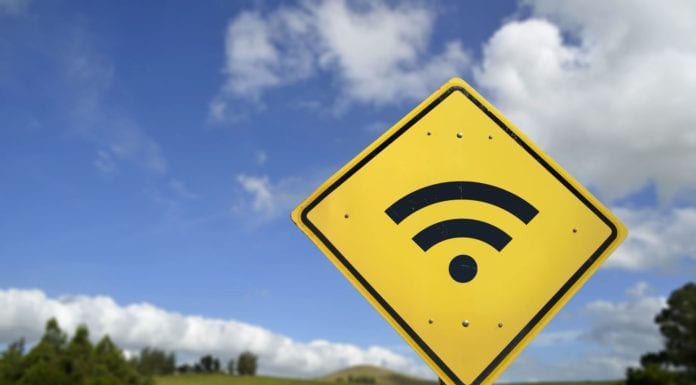Wi-Fi®: Connectivity on a global scale
Fair and equal access to internet connectivity is a necessity in today’s world, yet many communities remain underserved. The digital divide represents the unequal access to digital technology and connectivity in regions across the globe and places a disproportionate strain on the quality of life of far too many communities. From education to healthcare access, internet connectivity provides countless benefits to individuals, communities, and enterprises on a global scale.
The question is, who’s responsible for closing the digital divide – and how do we do it?
Wi-Fi® is poised to address these challenges, and maintaining access to unlicensed spectrum, where Wi-Fi operates, is paramount to delivering connectivity to users around the world. Wi-Fi offers the affordable, sustainable connection needed to empower economies and societies, ushering in the benefits that will bridge the digital divide.
Wi-Fi enables shared broadband connections
Four out of five households surveyed in Europe believe home Wi-Fi access is as important as utilities like electricity and gas. The need for stable broadband connections grew evident as education, enterprise, and healthcare services became increasingly virtual during the COVID-19 pandemic. Maintaining reliable internet access was crucial in cities like McAllen, Texas where students struggled to obtain the home connectivity needed to further their education. The city installed 1,000 Wi-Fi access points to provide free wireless internet to 43% of the area. These connectivity improvements impacted the entire community and transformed education access. The deployment also delivered increased economic value through work from home opportunities by providing flexible work options for job seekers and employees.
Delivering connectivity to remote communities is vital to closing the digital divide. Community Wi-Fi services are experiencing exponential growth around the world, and Cisco predicts there will be nearly 628 million public Wi-Fi hotspots worldwide by 2023, an increase of over 270% since 2018. In rural India, HFCL has deployed over 40,000 public Wi-Fi hotspots since 2020, creating a robust infrastructure that provides access to crucial resources like telemedicine, education, and government services.
Wi-Fi offers affordable connectivity for all
Wi-Fi technology is not only ubiquitous, it’s also affordable. The Federal Communications Commission (FCC) has described Wi-Fi as “indispensable for providing low-cost connectivity in countless products.” With multiple family members sharing a broadband connection, Wi-Fi is more affordable for individuals compared to cellular connectivity.
The cost savings continue as Wi-Fi connectivity can also reduce or even eliminate the need for travel, and telehealth is a prime example. Individuals with mobility impairments and those living in rural areas can now access healthcare remotely, reducing appointment times and waiting periods to see specialists, while also allowing healthcare providers to consult with more patients.
Wi-Fi supports sustainability
Scientists project that Earth will face catastrophic effects from climate change as soon as the early 2030’s, according to the Intergovernmental Panel on Climate Change. It is imperative that enterprises and governments evaluate the environmental impact of the technologies they support and work toward finding solutions that promote sustainability, while being accessible and affordable for users.
Installing cellular infrastructure can be costly and disruptive to rural communities, but using Wi-Fi over radio waves doesn’t require any large-scale infrastructure updates. Comparatively, physical construction of cellular sites would require infrastructure upgrades using concrete, steel, and other CO2-intensive materials. According to France’s Agency for Ecological Transition (ADEME), Wi-Fi reduces CO2 pollution 23-fold over 4G.
An inherently low-power technology, Wi-Fi is the most efficient way to provide high-speed connectivity within homes and buildings. Wi-Fi signals don’t require excess energy to penetrate exterior walls to reach end users, unlike outdoor base stations that utilize cellular connectivity. As builders add more insulation to walls and windows in their efforts to conserve energy, many look to employing Wi-Fi to deliver home connectivity as part of their sustainability efforts.
Unlicensed spectrum supports bridging the digital divide through Wi-Fi
With Wi-Fi traffic doubling every three years, the drastic increase in users, devices, and advanced use cases requires more spectrum to meet the growing needs of the population and the increasingly digital elements of daily life.
Wi-Fi 6E is the connectivity solution of choice for both home and communal use. The release of the full 1200 MHz of unlicensed spectrum in the 6 GHz band will empower the growing number of Wi-Fi 6E devices. The 823 Wi-Fi CERTIFIED 6E devices available can take advantage of the 6 GHz band and unlock its potential at no additional financial or environmental cost. Furthermore, the 6 GHz band can power Wi-Fi 6E today and forthcoming Wi-Fi 7 devices with lower latency than the 2.4 GHz and 5 GHz spectrum bands – and future Wi-Fi generations will continue to innovate using this spectrum band for years to come.
Access to unlicensed spectrum lays the foundation for the future of connectivity. By releasing the full 6 GHz spectrum and investing in Wi-Fi technology, global economies and societies will experience increased access to internet connectivity as well as crucial healthcare, education, and enterprise services, enhancing the quality of life of communities that have historically gone underserved.

